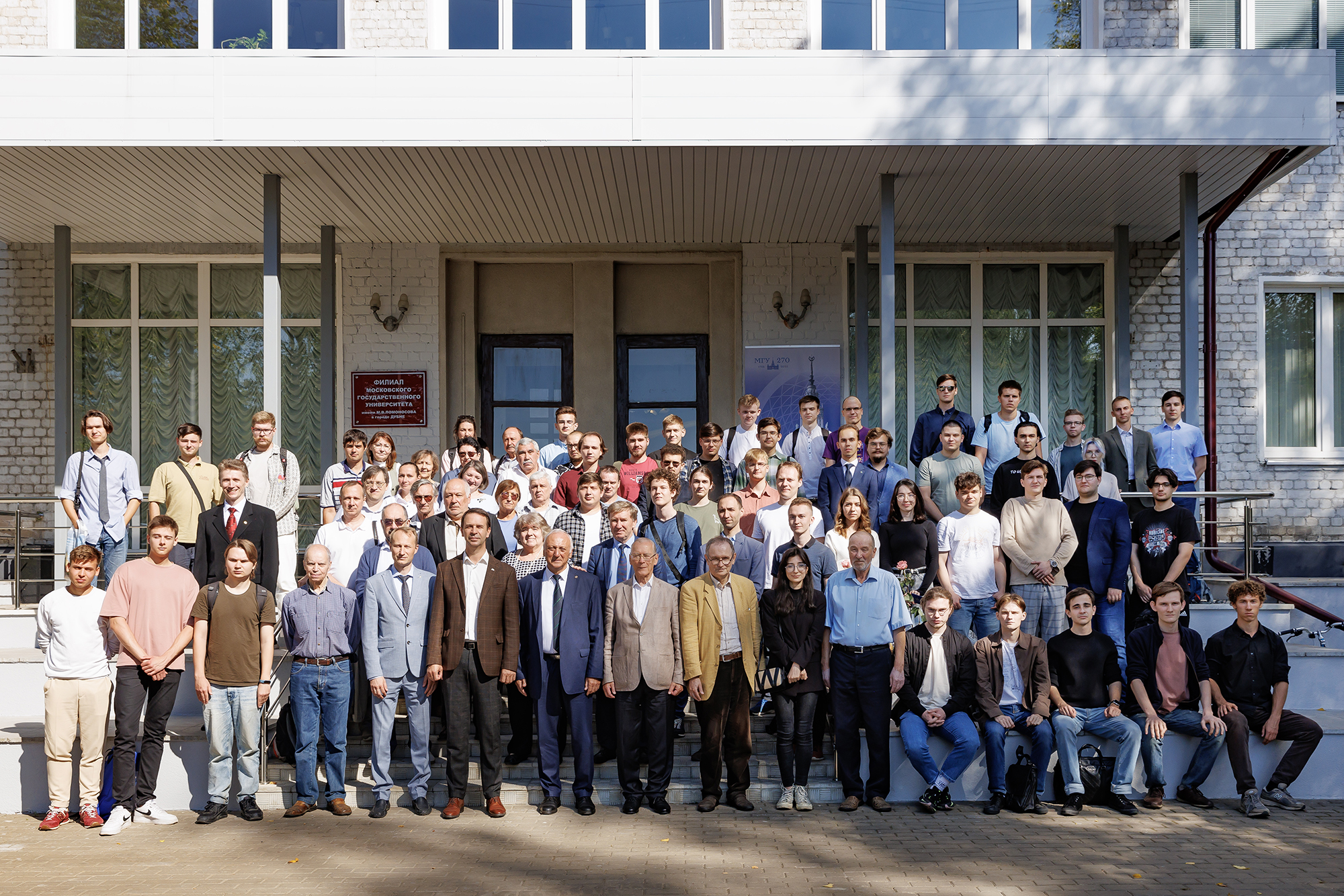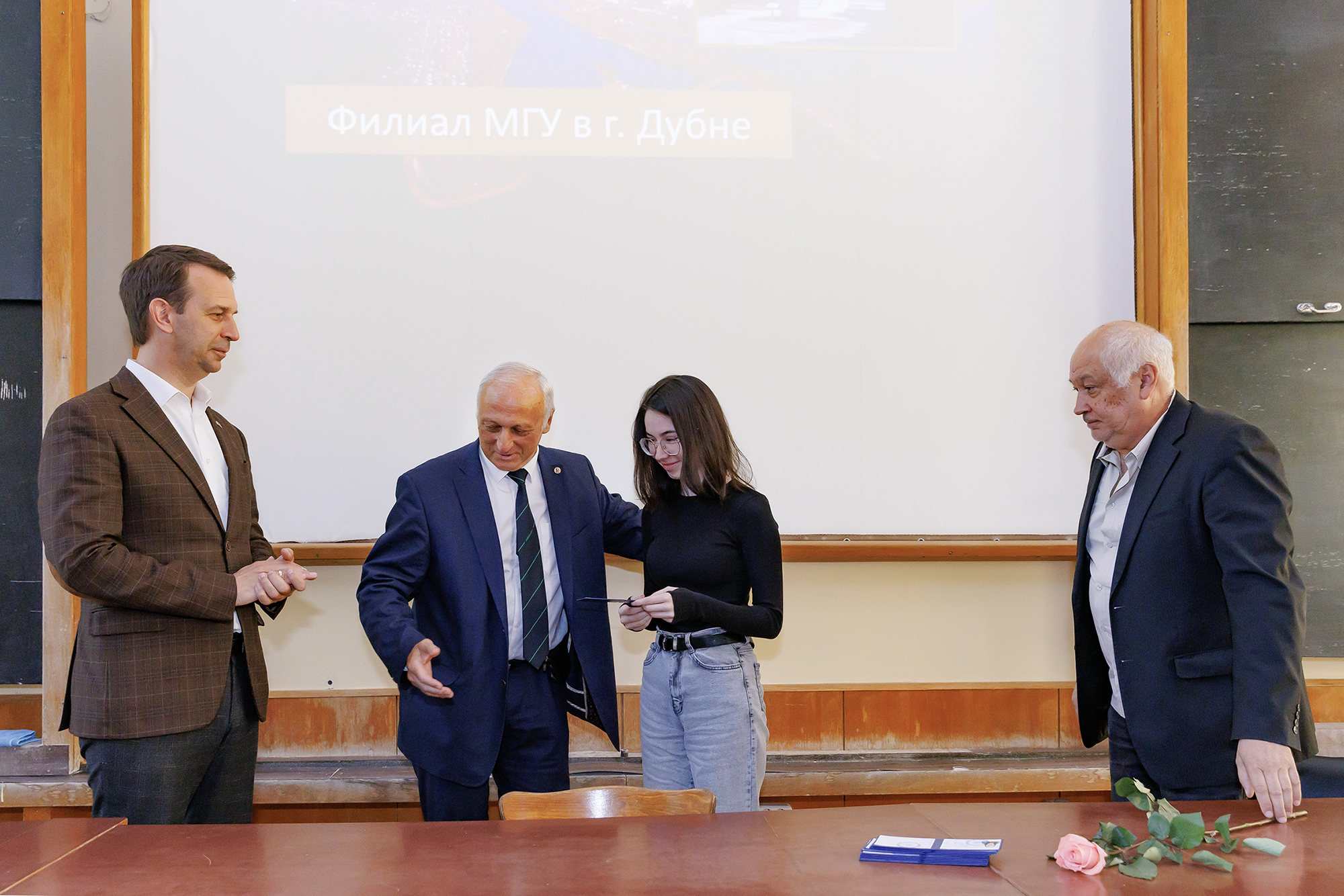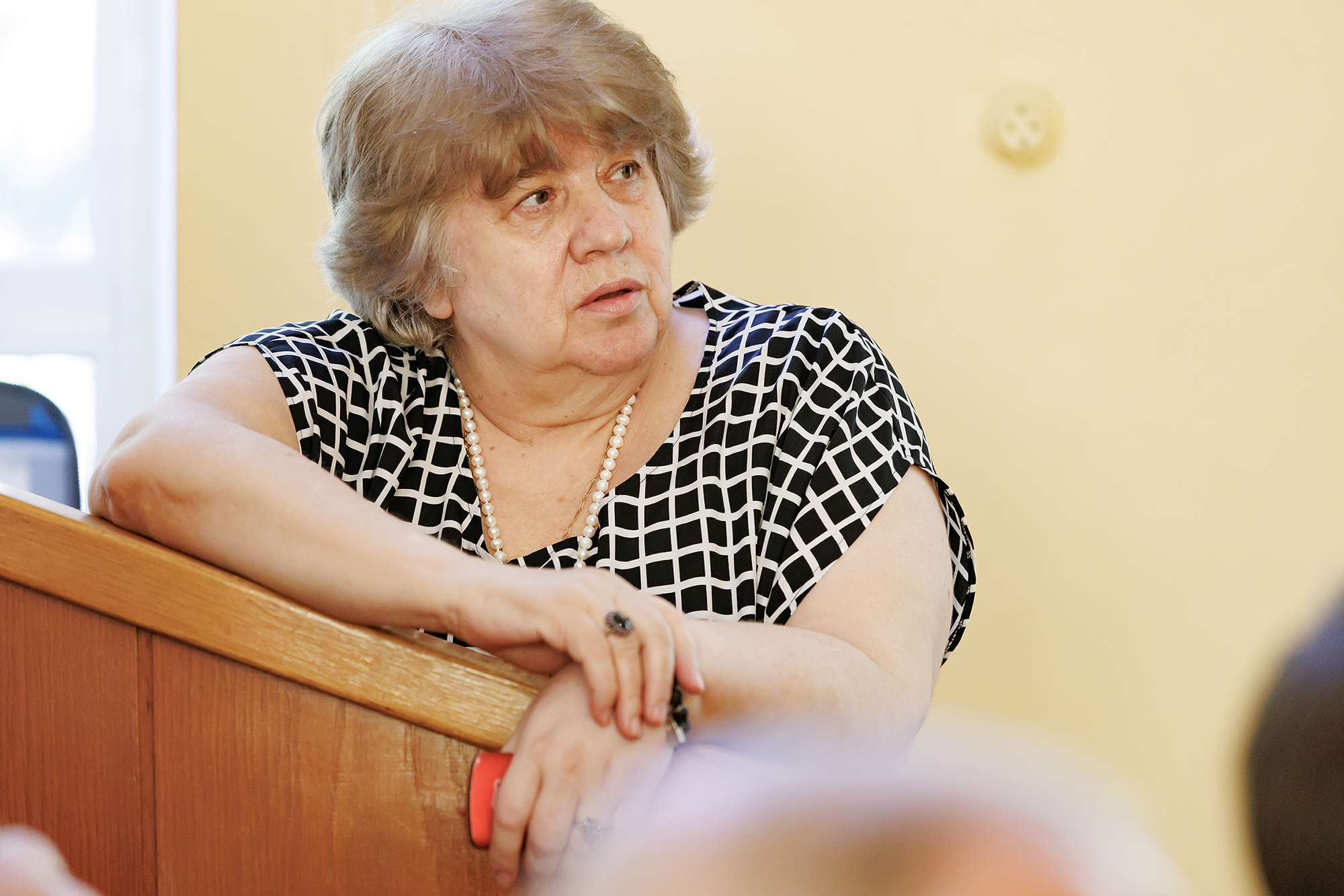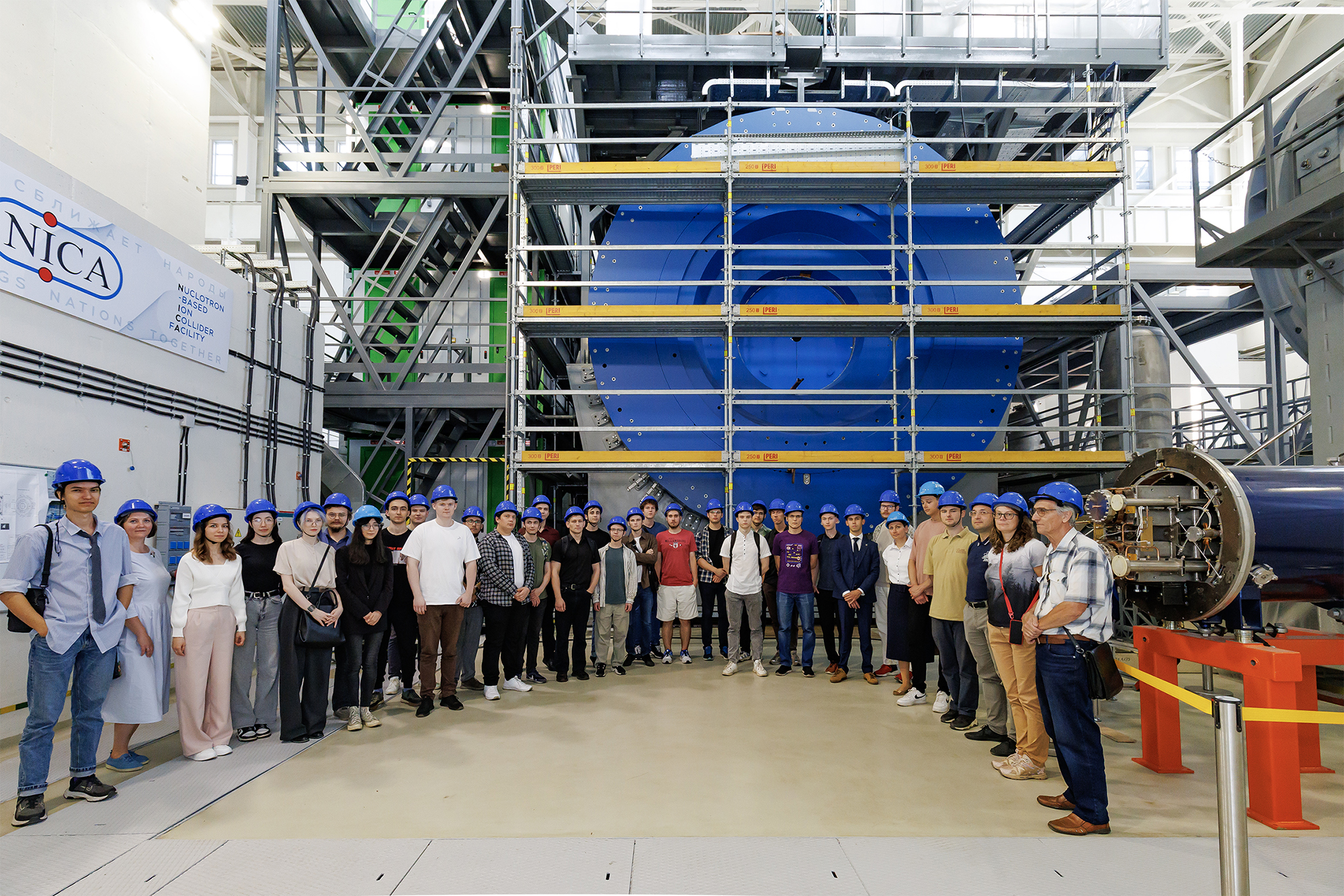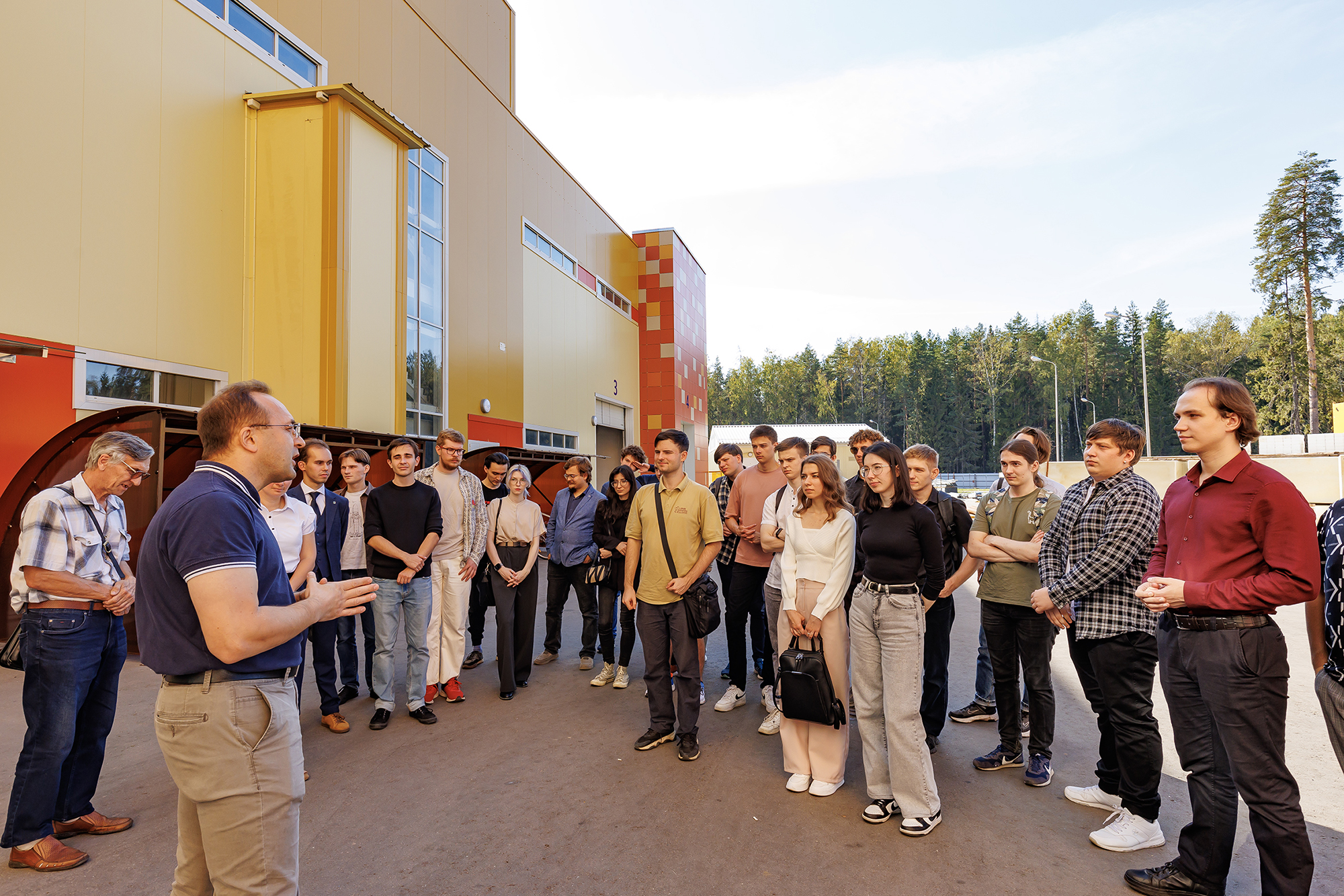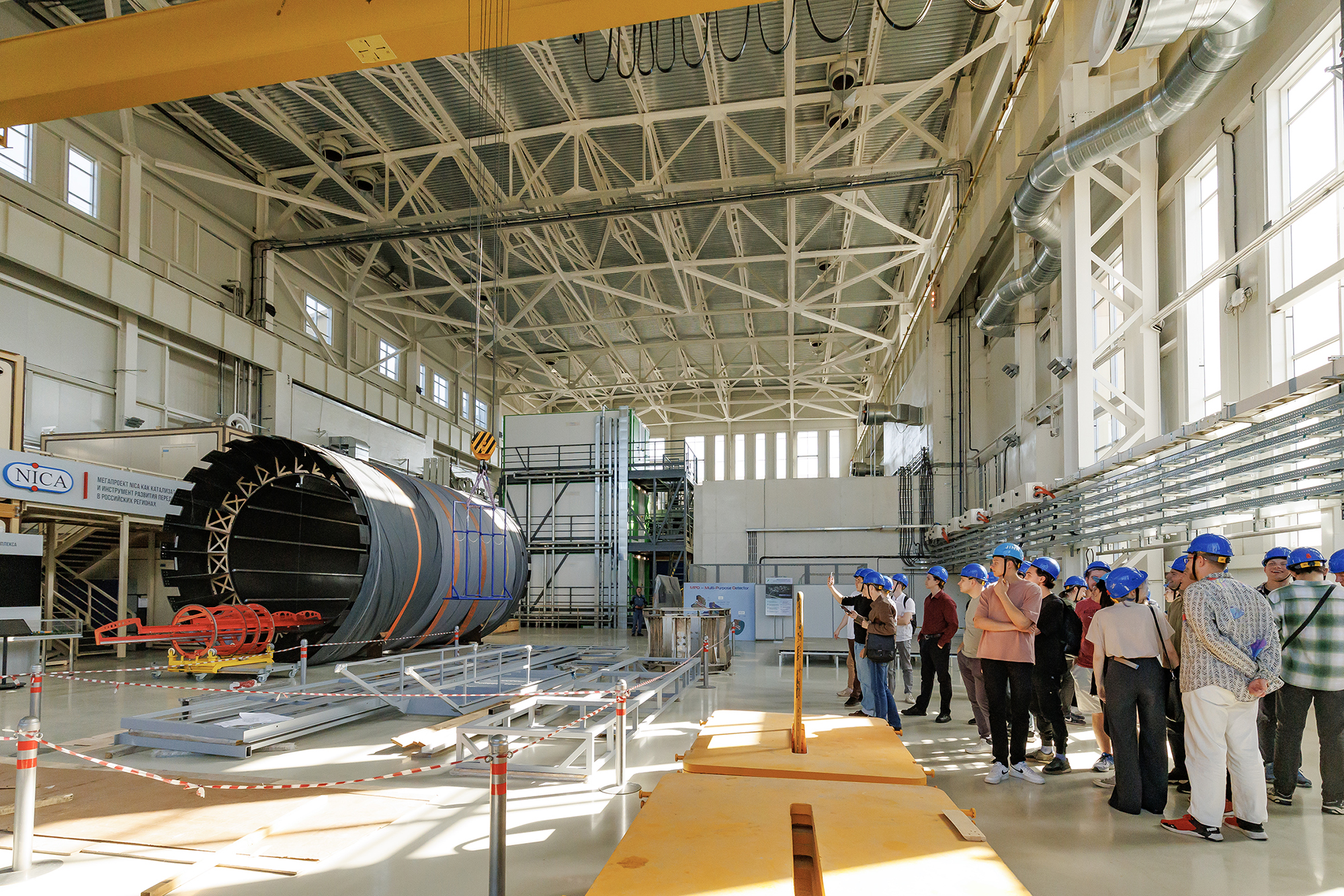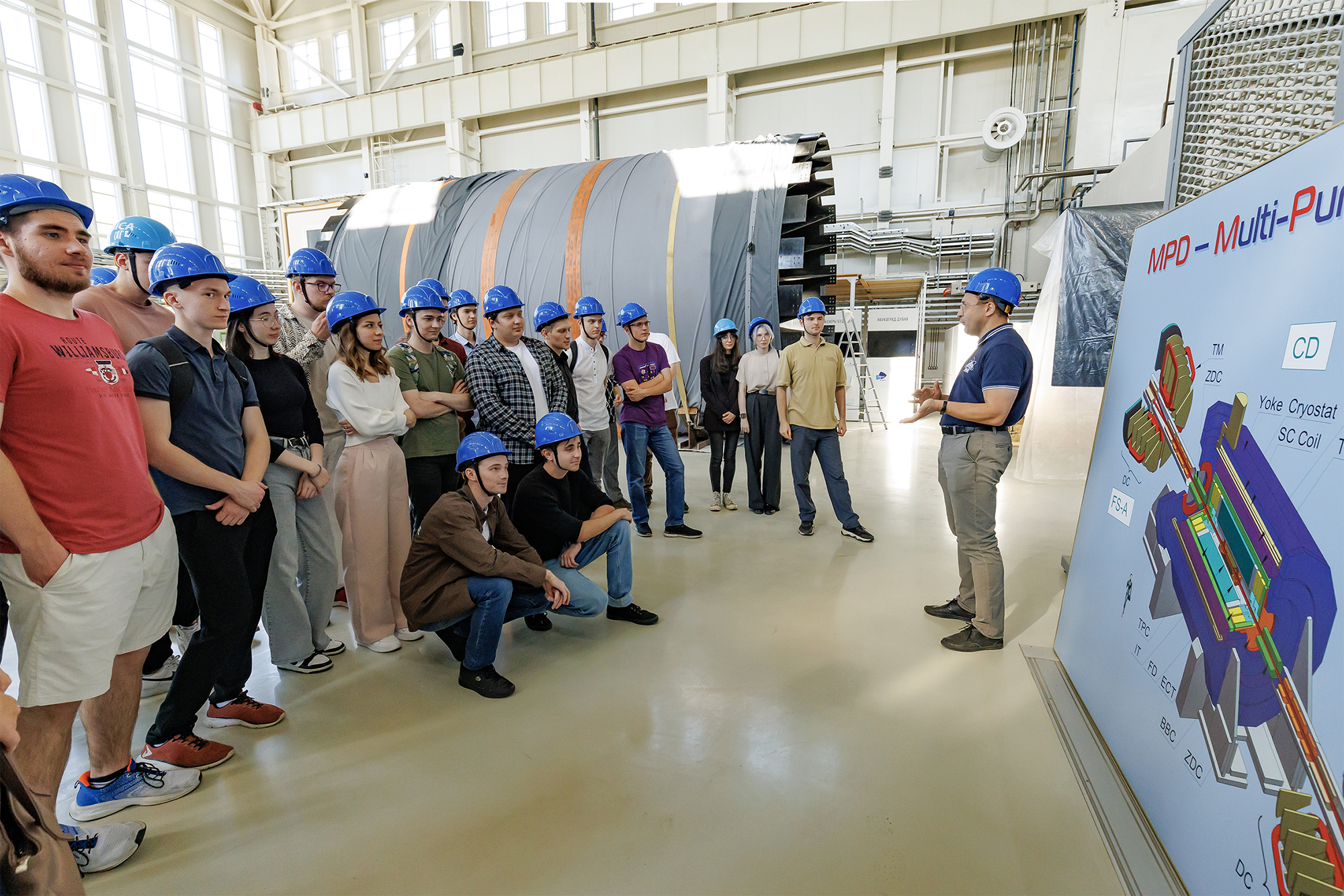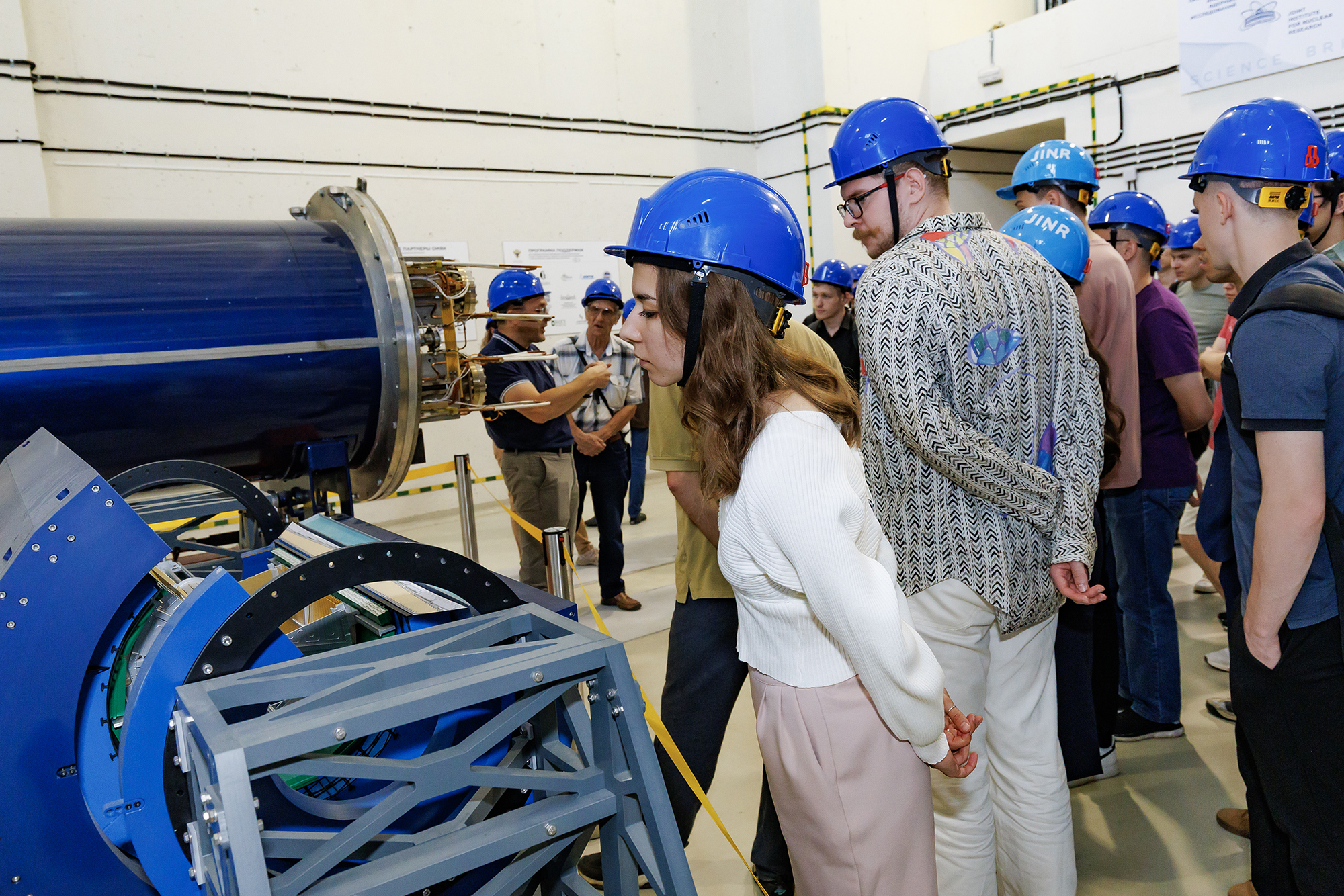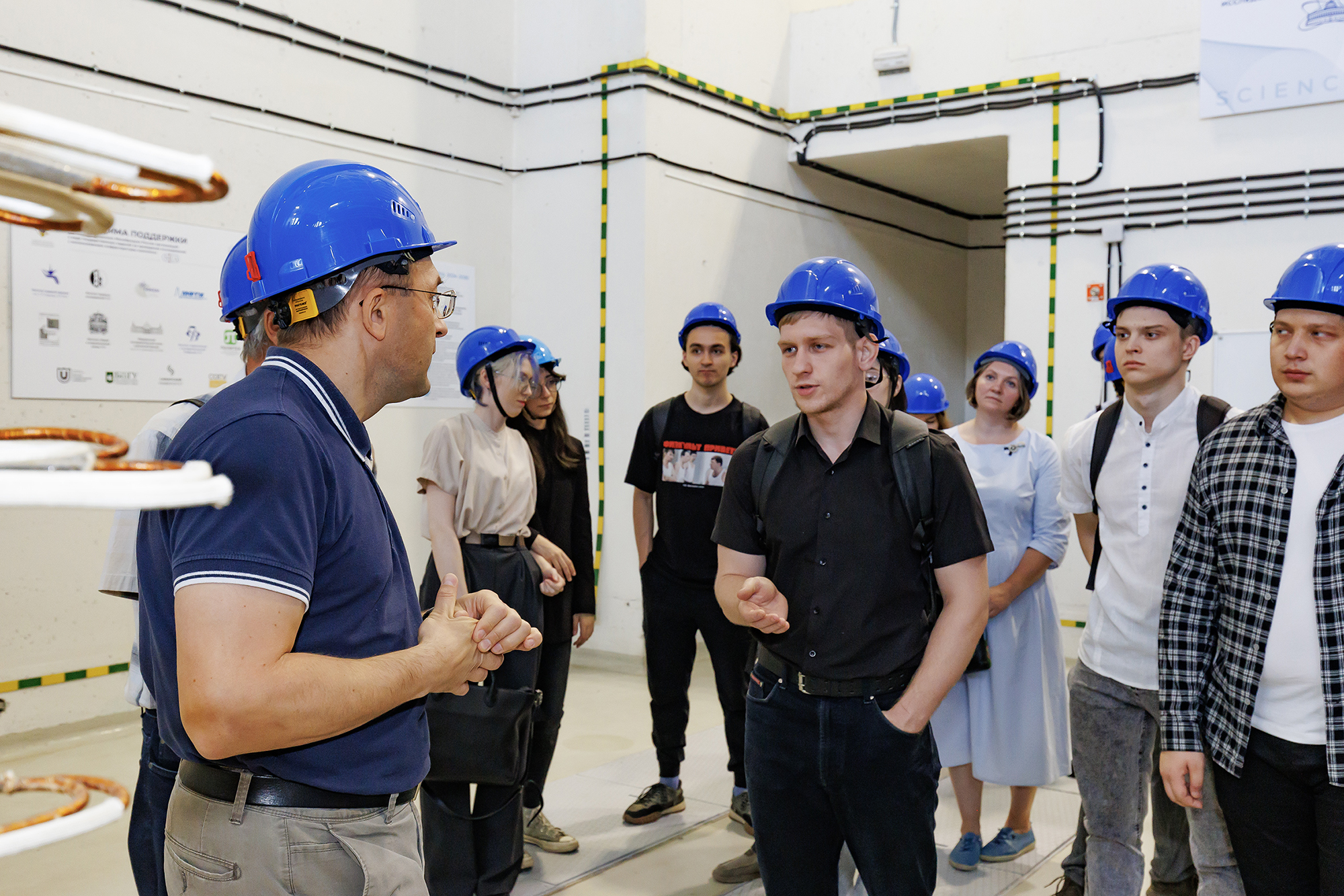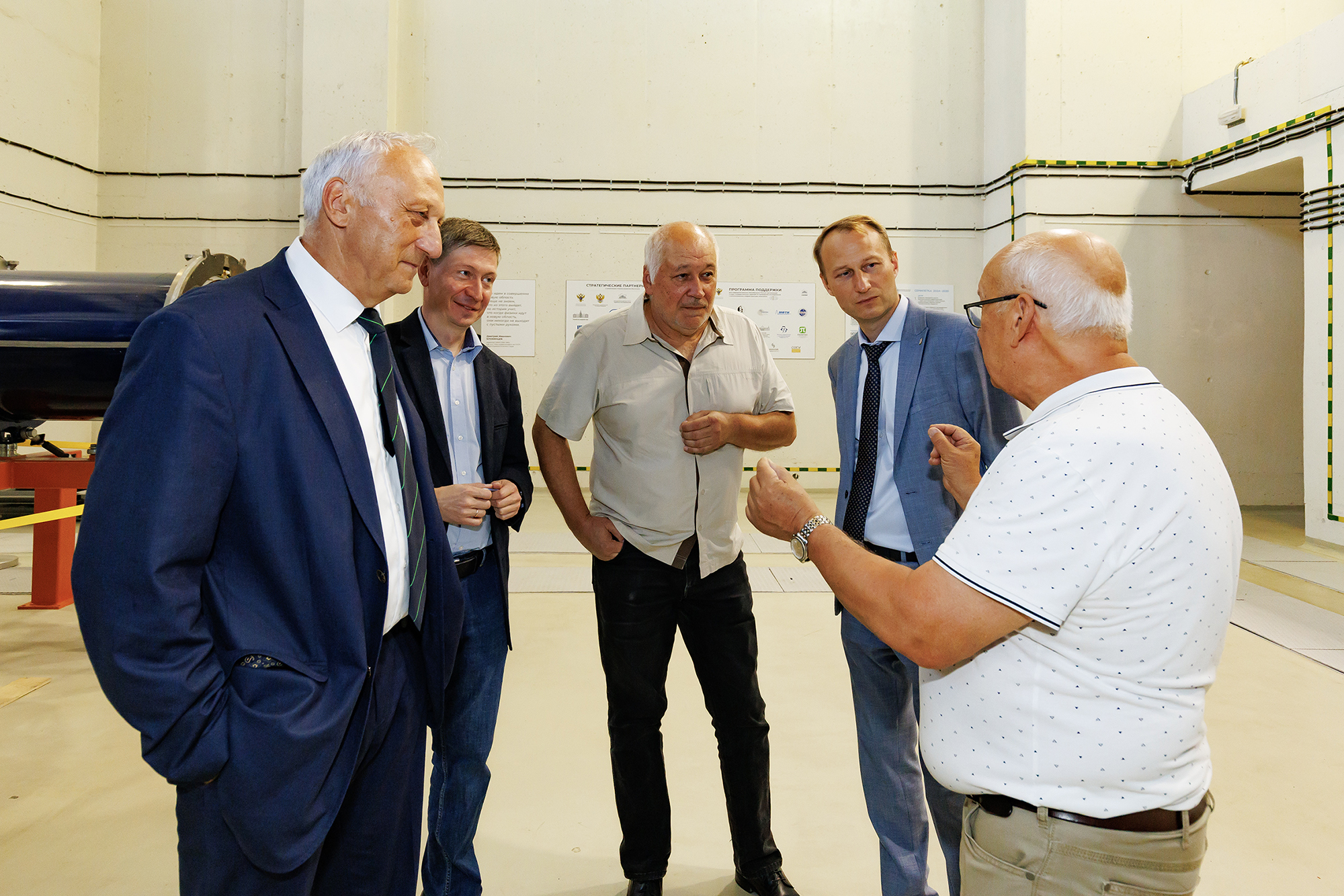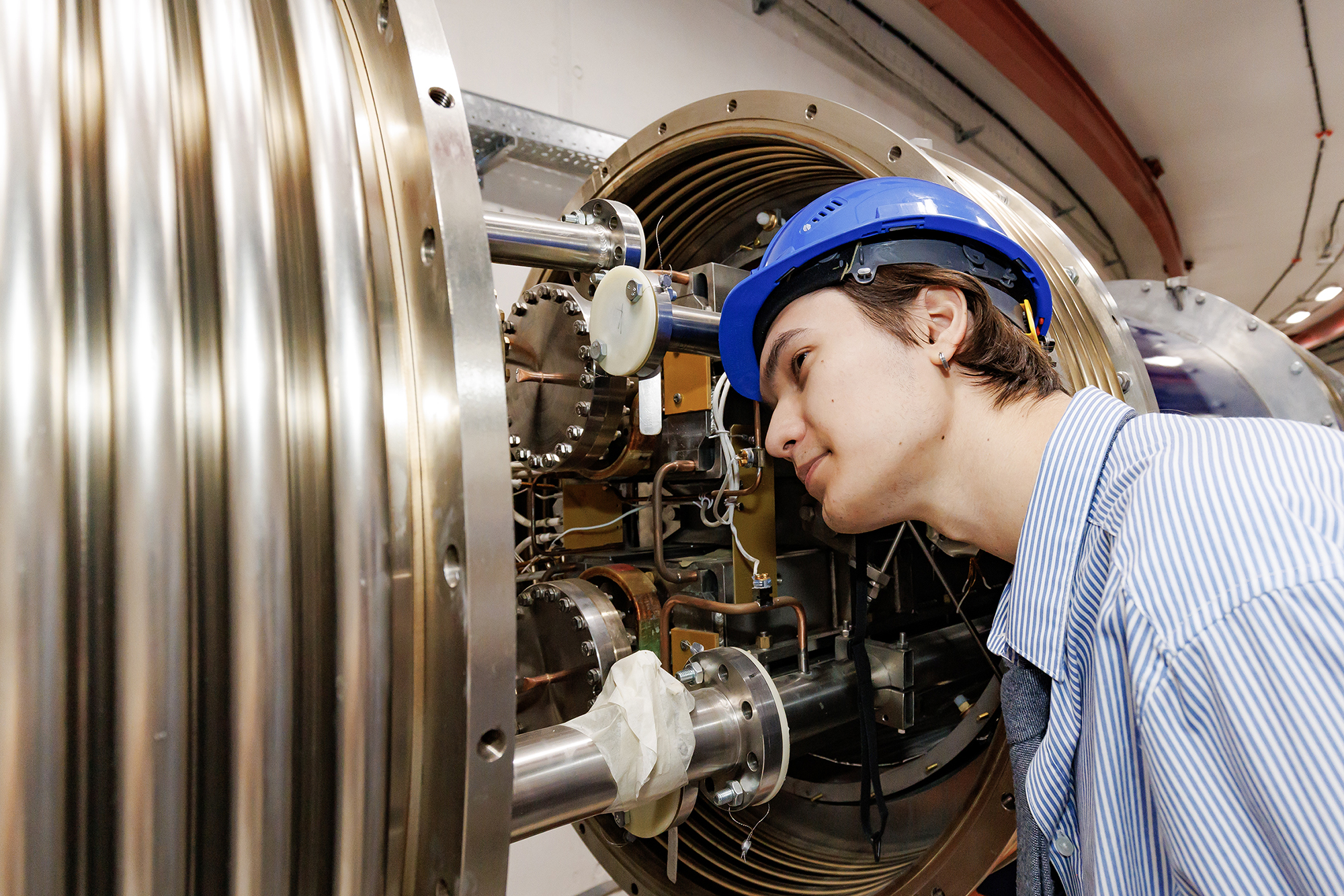First-year Master’s students start new academic year in Moscow State University branch in Dubna
Education, 10 September 2024
On 9 September, the start of the new academic year was celebrated at the academic building of the Dubna Branch of the Moscow State University (MSU). Students and guests of the event got introduced to the history of the Dubna MSU branch and the scientific infrastructure of the Joint Institute for Nuclear Research. In 2024, for the first time in its recent history, the branch welcomed first year Master’s students.
Dubna MSU Branch Deputy Director Alexander Olshevskiy opened the event. He congratulated the students and professors on the start of the academic year, stressing the importance of scientific and educational cooperation between MSU and the Joint Institute for Nuclear Research.
“Two years ago, the Dubna MSU Branch became a separate division of Moscow State University, and today it welcomes its first Master’s students,” Alexander Olshevskiy noted. — From the very beginning, Moscow State University and JINR agreed that in addition to physics, other majors should be available at the branch, correlating with the wide range of research areas of the Joint Institute. The Dubna MSU Branch is meant to reflect this multidisciplinary approach by designing and developing new educational programmes and specialties”.
This year, 11 students enrolled in the Particle Physics and Fundamental and Applied Nuclear Physics programmes, 10 of them getting full scholarships. With the new students coming from all over the country, it is clear that the educational programmes of the Dubna MSU Branch are attractive for young people from various regions of Russia, such as Vladikavkaz, Voronezh, Samara, Kazan, Irkutsk and Dubna.
Dubna MSU Branch Director, Corresponding Member of the Russian Academy of Sciences Eduard Boos spoke about the foundation of the institution and the events that led to it appearing on the map of Dubna in the middle of the 20th century.
In 1960, Academician Sergey N. Vernov initiated the establishment of the first MSU facility in Dubna. It was a division of the Skobeltsyn Institute of Nuclear Physics of Lomonosov Moscow State University (SINP MSU) and two departments of the Faculty of Physics, headed by Dmitry Blokhintsev and Vladimir Veksler, the founding fathers of the Joint Institute for Nuclear Research.
The first students graduated in 1963. Starting from 1970, students, aspirants, and interns from various universities of the USSR and other countries had been taking secondment to study and conduct research in Dubna. More than 800 students and 200 aspirants graduated between 1963 and 2015, including about 120 citizens of Bulgaria, Cuba, Germany, Italy, Mongolia, Vietnam, the United States, and other countries. More than 70% of graduates continued working at JINR, Moscow State University, and other scientific centres of the world.
From 2016 to 2021, Moscow State University continued to work in Dubna through the SINP MSU Department for Nuclear Research under the management of Tatyana Tetereva. During this time, about 40 physics masters defended their theses under the supervision of leading JINR scientists.
“Today, one of the main goals of the MSU Branch is to train highly qualified personnel in fundamental disciplines to work on projects of the Joint Institute for Nuclear Research. We are witnessing this world-renowned scientific centre continuing to increase its influence. In order to achieve all the goals set, the branch plans to expand in the near future by introducing new promising areas into the educational programme,” Eduard Boos outlined plans for the development of the Dubna MSU Branch.
The need to train highly qualified personnel in mathematical modelling and data processing of megascience projects using big data methods analytics and artificial intelligence led to establishing a new major, Applied Mathematics and Computer Science. According to the heads of the branch, the Academic Council of Moscow State University has already approved a curriculum for the new Master’s programme entitled “Methods and technologies of data processing in heterogeneous computing environment”. In the coming years, it is planned to introduce such areas as radiochemistry, applied mathematics, mathematical physics, and others.
JINR Director, Head of the Fundamental and Applied Nuclear Physics programme at the Dubna MSU Branch, Academician of the Russian Academy of Sciences Grigory Trubnikov made a presentation on JINR’s current projects and research fields and the history of joint scientific and educational work between Moscow State University and the Joint Institute. He introduced the main areas of the Institute’s research programme and spoke about the achievements of each of the seven laboratories.
According to Grigory Trubnikov, a unique feature of the branch is that the students will work in the special environment of JINR, an international organization utilising world-class scientific infrastructure. It includes the NICA Accelerator Complex, the Superheavy Element Factory based on the universal DC-280 High Current Cyclotron, the Baikal-GVD Deep Underwater Neutrino Telescope, the IBR-2 Pulsed Reactor, the Multifunctional Information and Computing Complex (MIСС), etc.
“JINR is exceptionally grateful to the employees of the MSU Faculty of Physics for the fact that Dubna has a branch of Russia’s largest university,” Grigory Trubnikov stressed. “Thanks to the long history of fruitful collaboration between our organizations, the Joint Institute researchers and the Faculty of Physics students have the opportunity to successfully implement many projects in scientific centres in both Russia and other countries using the JINR infrastructure.”
Moscow State University Vice-Rector Stanislav Bushev congratulated the students as well, noting that Dubna has a unique combination of high scientific prospects and a comfortable urban environment. He expressed confidence that each student will be a part of the team and contribute to the advancement of science. “There is everything here for you to make progress and become true professionals in your field,” the Vice-Rector of Moscow State University summed up.
At the end of the presentation, Grigory Trubnikov, Eduard Boos, and Alexander Olshevskiy held a ceremony of awarding student identification cards to the first year students of the branch. An excursion to the Laboratory of High Energy Physics at JINR, namely the site of the NICA Accelerator Complex, was organized for the students and professors to get acquainted with the research infrastructure of the Joint Institute.
By developing a range of educational practices, the Joint Institute for Nuclear Research, as an international and intergovernmental organization, gives students of the Dubna MSU Branch the opportunity to apply their knowledge and skills to fulfil one of the most important tasks of modern science education: establishing international relations. This is what will allow students to not only join scientific teams, but also participate in major international collaborations, bringing large-scale projects to life.
